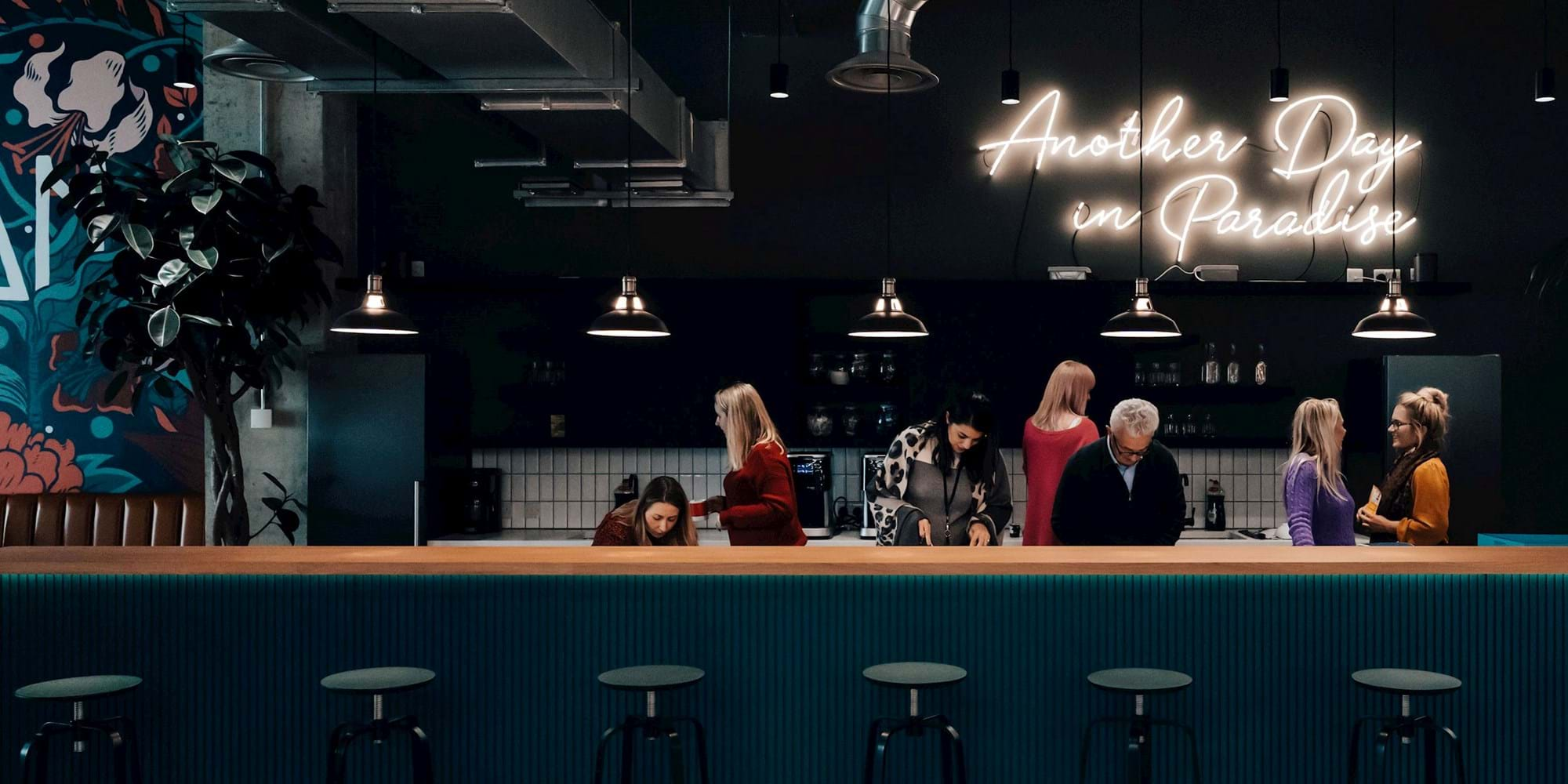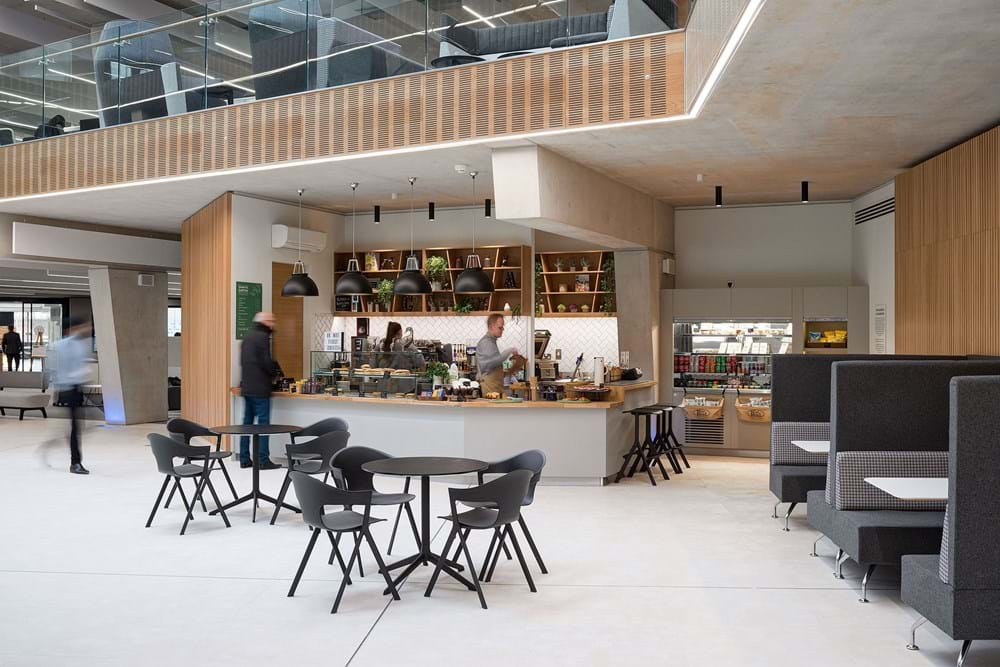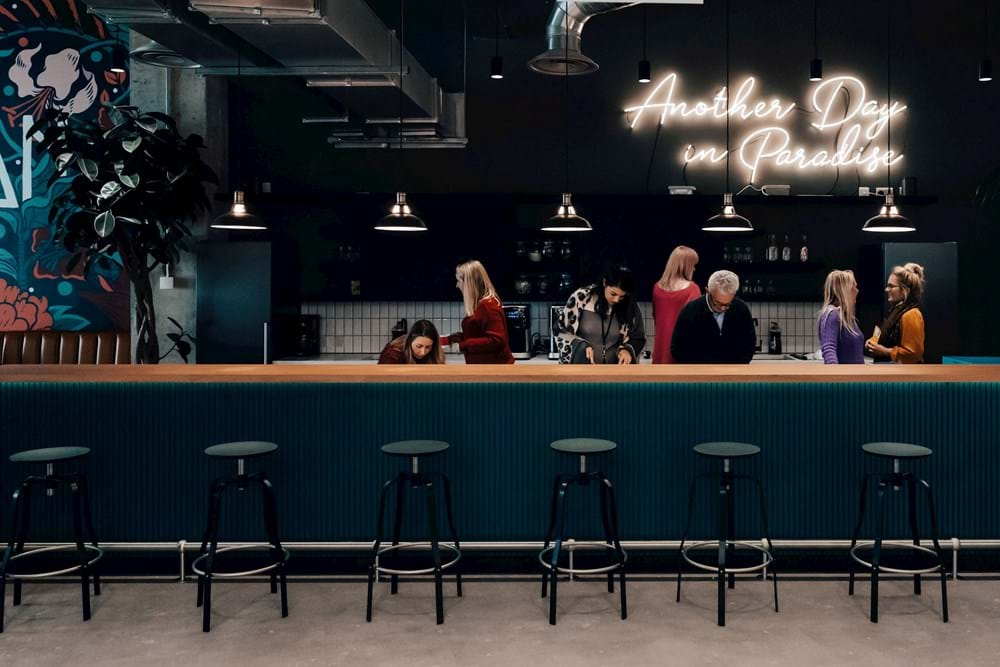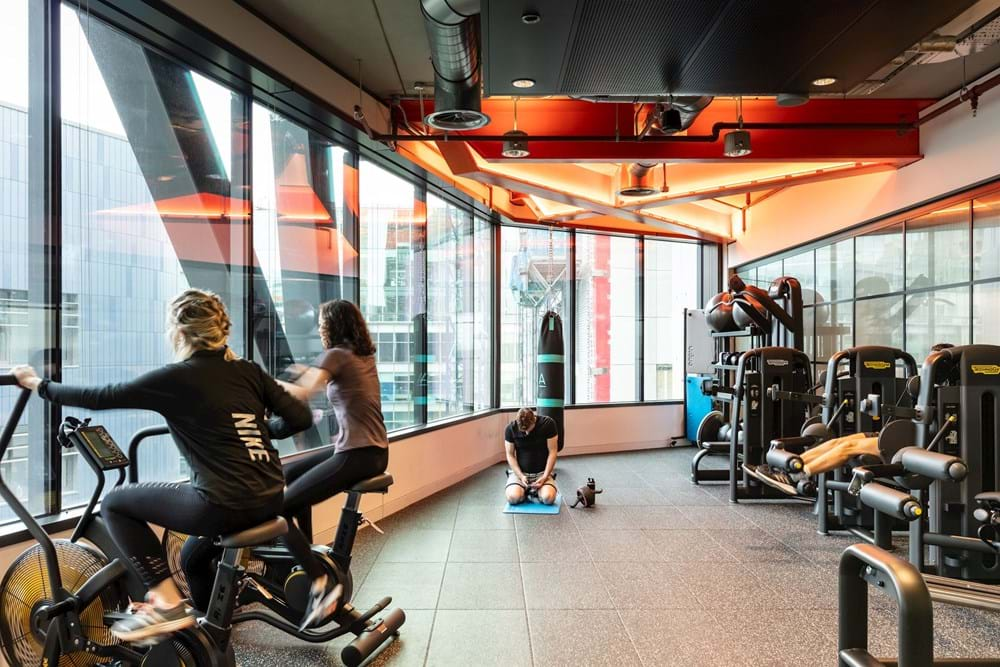Improving Employee Engagement Through Office Design
One of the primary concerns for businesses in the COVID era is making sure that their companies are enabling a productive and innovative workforce, in a time of changing expectations, increased emphasis on wellbeing, and a general sense of unease and uncertainty. The question of how best to go about improving employee engagement, connection and retention has been long pondered, and office design is a key factor in creating a business that attracts and retains workers.
The link between office design and employee engagement is tangible, and well-studied. Sapio Research’s piece Wellness Together emphasizes the importance of offering good environmental conditions and flexible working practices to increase employee engagement and commitment. The findings were even clearer from a focus group used as part of the research; 48% of the study group suggested that the design of their workplace had a significant impact on their decision to stay with a company; 27% thought that it was important to have sufficient breakout and collaborative spaces in the workspace for productive work to occur; 43% wanted the option to work in a quiet private space when necessary.
When one considers that the average cost of replacing employees is about 20% of their annual salary, according to newdayoffice.com, it becomes abundantly clear that employers simply cannot afford to run businesses that are not focused on employee commitment and retention. A renewed, reinvigorated office design, filled with the essential amenities of the modern workplace, is essential in making sure your business is keeping up with the competition, and establishing itself as a place for employees to stay long-term.
In-house café at Atkins
Here are a few key design areas that you should think about in undertaking your new office design, and how they can help you retain employees.
Flexibility is Key
We have written extensively on the importance of flexibility in the modern workplace in our past blogs, including our piece on reimagining the workspace in the post-COVID era. Flexibility is undeniably the word à la mode when it comes to talking about office design, and for good reason. COVID has fundamentally changed the way we work – a significant portion of the workforce now wants the flexibility to work from home at some points during the week, and office spaces generally need to be more focused on catering for employee-specific needs during the working day.
There are several ways that you can make your space more flexible, including the addition of ‘flex spaces’ – spaces that aren’t necessarily used for one specific purpose, but that can be adapted to meet demand on-the-fly.
Consider whether private offices can be converted into meeting spaces; whether meeting rooms can be fitted with technological innovations to promote mixed working, or whether you can add unassigned seating or benching zones for freelancers. Informal collaborative spaces are crucial, too, even if they’re strictly social.
Imbuing your office design with flexibility is an incredibly effective way to maximising employee commitment to your company
Teapoint at SLG
Comfort is a major facet of employee retention. With an ever-heightening focus on employee health and wellbeing, businesses need to make sure that they are making their offices places of comfort and security for their employees.
Examples abound of ways that you can improve comfort levels within your office, but a few stand out as easy solutions that can go a long way towards your employee retention goals. These include adding colour or artwork to walls – different colours are proven to affect mood and energy levels, while artwork can add personality and flair; just check out our design for SLG’s new workspace for a clear example of bold, vibrant colours and artworks creating a bespoke, exciting space for employees.
Other additions to your space could include biophilic elements, offering natural stress relief and providing tangible benefits to air quality and noise throughout the office, or featuring different materials and textures on surfaces throughout the space. Social zones are also key; the addition of a bar or teapoint gives employees a space to decompress and enjoy each other’s company outside of a strictly professional context, creating an overall more comfortable environment for your office.
Gym space at Alpha FX
Agency and Modularity
Perhaps most importantly, one should place agency in the hands of the employees themselves when it comes to office design. Allowing employees to have a say in how the new office should look, feel and operate – making sure their needs are acknowledged and their preferences are recorded – can create a much healthier working environment.
Beyond having employees involved in the design phase in some capacity, allowing modularity throughout the office gives a wealth of options for workers. Including removable partitions, up-to-date A/V hardware, or easy access to temperature regulation controls are all ways that employees can make a space feel theirs.
Employee retention is undeniably a large issue facing many companies as we transition out of a deeply unsettled period, and for good reason: getting it wrong in this department can be very costly. Making sure that your office design is maximising its potential in improving retention is paramount.
Find out more about our previous blog 5 Ways To Promote Social Connection in Your Workplace



